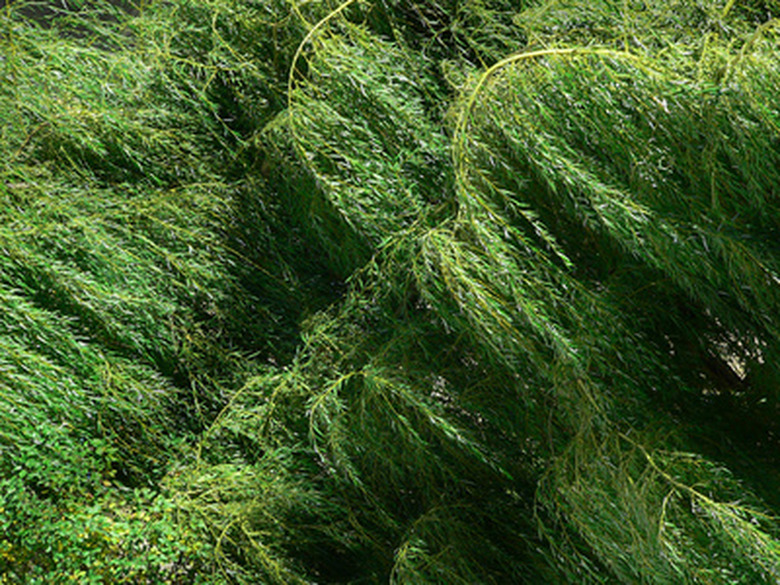Willow Trees & Bugs That Live In Them
Willows (Salix) are a popular landscape tree. There are around 90 species of willow trees that grow and flourish in North America, according to the University of Oregon. Many are grown in tree form, as a multi-branched shrub and also as a dwarf tree. The foliage of all varieties is slender and pointed in shape. Willows are deciduous. The trees seeds are covered by a cap-like seal that appears to be made of soft cotton. Numerous insect pests affect the various species of willow trees.
- Willows (Salix) are a popular landscape tree.
- The foliage of all varieties is slender and pointed in shape.
Aphids
Aphids are drawn to the new growth of all willow tree varieties. The insects live in large colonies where they cluster to suck the sap of the tree from the stems and foliage. There are several varieties of aphids that feed on willows. They can appear green, brown, yellow and black. Aphids produce a honeydew substance that attracts ants who feed on the excretions of the insect. Infestations can cause stunted and deformed leaf production. Control can be gained through chemicals, washing the trees foliage with water or placing predatory insects that feed on aphids, such as ladybugs, on the willow.
- Aphids are drawn to the new growth of all willow tree varieties.
- The insects live in large colonies where they cluster to suck the sap of the tree from the stems and foliage.
Willow Borer
The willow borer (Cryptorhynchus lapathi) consumes the foliage of the willow tree. Females borers burrow into the tree to deposit an egg. The hatching larvae burrows deep into the tree to feed. Adults emerge from the burrows in August. The life cycle of the willow borer can span up to three years. Young willow saplings can easily perish from willow borer feeding. The only control of the insects is to remove all infected stems and use pesticides to kill any remaining borers.
- The willow borer (Cryptorhynchus lapathi) consumes the foliage of the willow tree.
- Young willow saplings can easily perish from willow borer feeding.
Morning Cloak Butterfly
The morning cloak butterfly (Nymphalis antiopa) is a brownish, large butterfly that lives on willow trees. Males are especially territorial in nature and reside within the tree for their entire life. The adult butterflies lay eggs each spring. The larvae feed on the foliage of the willow tree until their transformation into a butterfly. Despite the large scale feeding on the leaves by the larvae the morning cloak butterfly does very little damage to the willow that it calls home, and in most regions the butterflies are treasured for their beauty.
Poplar Tentmaker
The poplar tentmaker (Clostera inclusa) lives on both willow and poplar trees. From March to September moths lay an abundance of eggs on the willow tree. Each egg cluster can contain between 150 to 300 eggs. The larvae live in spun webs that are made of the trees leaves. The larvae feed heavily. Despite heavy feeding, the larvae of the moths pose very little danger to the willow tree.
- The morning cloak butterfly (Nymphalis antiopa) is a brownish, large butterfly that lives on willow trees.
- The larvae feed on the foliage of the willow tree until their transformation into a butterfly.
Imported Willow Leaf Beetle
The imported willow leaf beetle (Plagiodera versicolora) was imported from Europe in 1915. The beetle can defoliate a willow tree if infestations are severe enough. Both adults and larvae feed on the willow tree. Control through bacteria, chemicals and insectidal soaps can help control the infestatons on willow trees.
